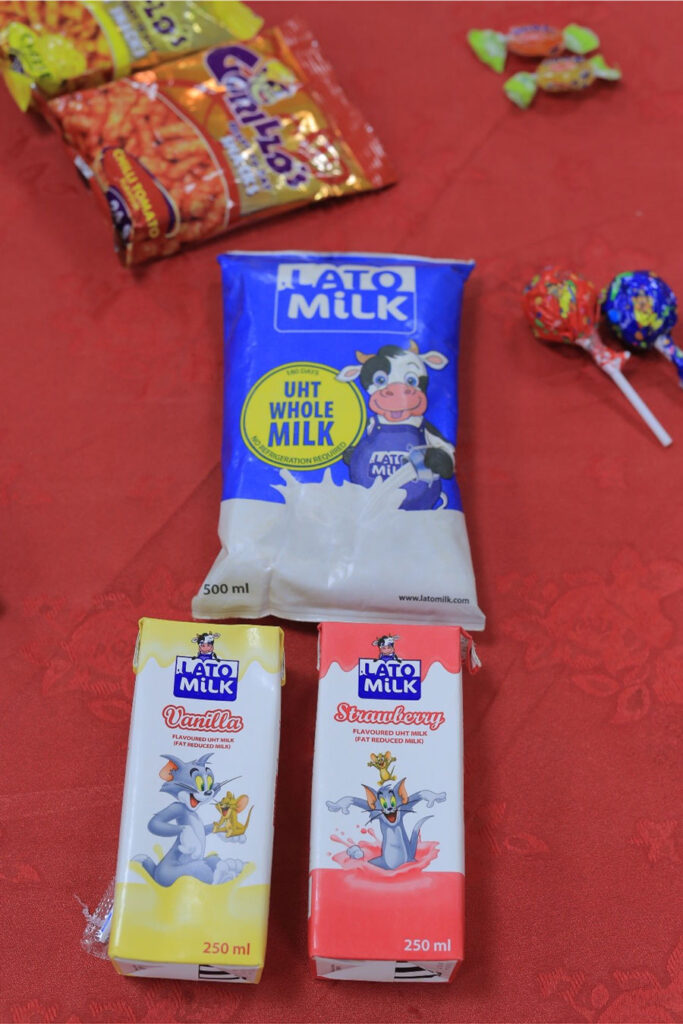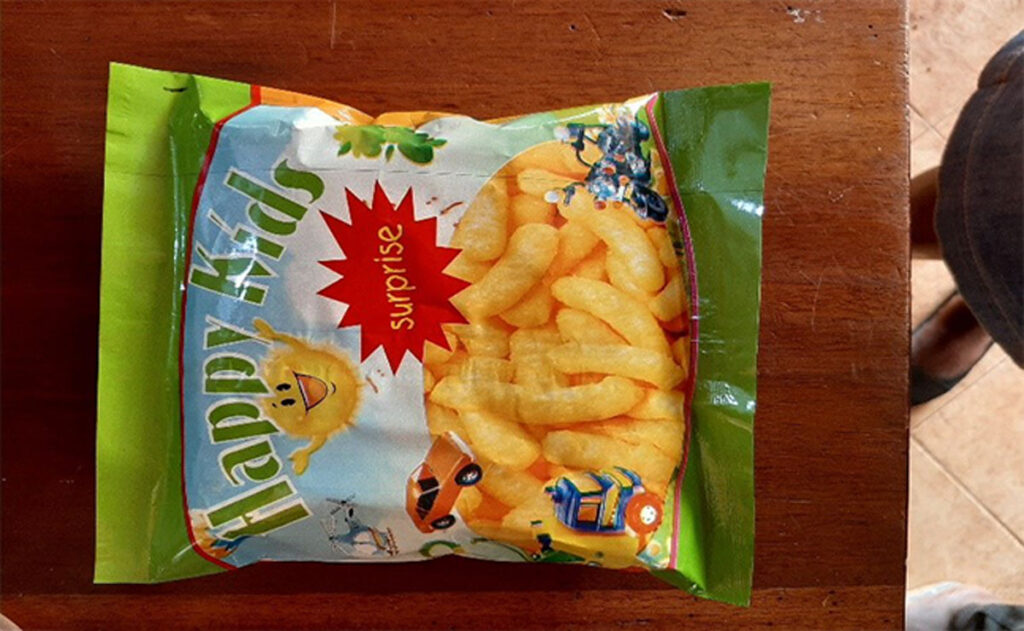What is in our children’s food environment?

Florence Basiimwa Tushemerirwe
- January 22, 2021
What are food environments?
According to the Food Environment Health (FEH) experts, food environments are defined as “the collective physical, economic, policy and socio-cultural surroundings, opportunities and conditions that influence people’s food and beverage choices and nutritional status” (Swinburn et al., 2013). In our study context, we are focusing on children’s food environment and children aged between 2-18 years (adolescents are included here). The environments where children spend most of their time form their food environment. For example, schools, homes, hospitals and along the roads that children use to walk to school. In addition, the price of the food is also part of the food environment.
Why are we researching the Food Environment at this stage in Uganda?
Uganda’s food environment is increasingly unhealthy due to an on-going nutrition transition. Our dietary patterns are shifting from eating locally produced whole foods rich in nutrients, to ultra-processed, less nutritious foods, with high quantities of added sugar, salt, saturated fats and trans-fats. While Uganda is East Africa’s food basket, she is currently globally networked. “BIG Food” – defined as large commercial multi-national companies that dominate the food and beverage environment, easily exchange trade ideas including food advertising/marketing/promotion information across-borders as they explore an un-tapped market for their products. Uganda imports and allows the BIG Food companies to advertise ultra-processed unhealthy food, which exposes our children to risk of obesity. In simple terms, I am talking about globalization. Globalization comes with urbanization, where life is fast paced and people want affordable, easy to cook and ready to eat food in order to keep up with the work pressure.
Globalization, urbanization and the nutrition transition are serious drivers of our food environment. Focusing on the food industry, the Uganda government encourages both local innovation (Zimba Uganda – Buy Ugandan, Build Uganda or BUBU), and international investors to market their products. Uganda’s evolving modern market is open to processed food imports. The competition between the locally processed food and the imported products is high, and it comes with creative food marketing strategies. For example, the food industry is partnering with other sectors like ICT to ensure that food products reach the target population (prospective buyers and consumers). Food marketing and promotion is the center of our research.
Currently, Uganda’s food environment is experiencing aggressive unhealthy food advertising on all types of media. Among the commonly advertised food are buckets of Kentucky Fried Chicken (KFC) food depicting huge portions of fried potato chips and chicken; LATO milk with added sugars featuring Tom and Jerry cartoon characters; teenagers advertising highly sweetened beverages like Mirinda, to mention but a few. Our children consume the advertised food and beverages. Wontanga Emmy in his 2019 research on “television food marketing and the adolescent food choice in Kampala” found that majority of the foods advertised on TV are unhealthy and children preferred to eat the advertised food. In 2020, Oumy E. Dia and colleagues researched the outdoor food advertisement around 25 schools in the Kampala Metropolitan area, within 250 meters of each school. Their research found 1,034 “branded” food advertisements among which 80% were of unhealthy food. Spires, et al 2020 did a snapshot study of Uganda’s food environment in the rural and urban settings and found in-community advertising, without regulation.
The three maiden studies mentioned above all point to the fact that unhealthy food is readily available to eat, whether one lives in the urban or rural setting. With better income, our purchase power increases, and we can easily access a soda, chips (french fries), burgers, pizza, sausages, to mention but a few.
The local food industry innovations are not innocent either. Food vendors are strategically located along streets, in residential areas and near schools. Their food products including the rolex, roasted and fried red meats are rocking local markets, the internet, food and products transport mobile applications like Safe Boda, Glovo and Jumia, our mobile telephones and social media. Moreover, we have huge billboards showing unhealthy food. Some sweetened beverage companies sponsor school sports events while other companies partner with the Mobile Telephone Networks to take advantage of the Short Messaging Services (SMSs) to send food advertisements.
These practices show unregulated food advertising that has modified Uganda’s food environment. The current food environment aggressively exposes our children to unhealthy diets, a major risk to obesity and nutrition-related NCDs. Children’s exposure to unregulated food advertising influences their food choices, preferences, and increases their intake of the advertised food. Furthermore, children pester their parents to buy them the advertised food, and some food products have tie-ins and promotions like buy-one-get an extra piece of deep-fried chicken!
Consequently, the most recent Uganda Demographic and Health Survey of 2016 reported 4% of children below five years and 16% of adolescents are overweight or obese. Worldwide, the status of a nation’s Food Environment is a major determinant/influencer of childhood overweight and obesity.
The time to provide our children with healthier food options is now! We call upon all stakeholders to join us to work towards preventing childhood obesity and Nutrition-related Non-communicable diseases (NR-NCDs) like type-2 diabetes, high blood pressure, some cancers and cardiovascular heart diseases. We must put a stop to the NR-NCDs because they are weighing down the health system, that was designed to address infectious diseases and under-nutrition. This would improve childhood health outcomes and contribute towards achieving the Strategic Development Goals.
What we find in the current children’s food environment
Below are some illustrations of what we currently find in our food environment.

Streets/Roads – Our children are very observant, and quietly interested in their surroundings. Let’s imagine that you are on the way to the supermarket, travelling from a city suburb to the central business area. This trip turns out to be destructive because our children notice their favorite TV cartoon characters (Tom and Jerry) on different sizes of billboards. The cartoon depicts either Tom is chasing, running after, squeezing or just carrying Jerry on his head while enjoying sugar sweetened LATO Milk. Some billboards show Tom and Jerry chasing each other as they drop in the milk, or the milk is smothered on their faces.



Supermarkets & Shops: Allow me to take you through a brief description of what is in the modern markets. Once in a supermarket, Tom and Jerry are staring and laughing at us while swimming in our children’s milk flavour of choice – Strawberry! As if that is not enough marketing, the same brand is strategically placed in the aisle at the level where our children can help themselves to fill the shopping basket. Your guess is as good as mine; the child pesters us to buy it for them. To avoid the embarrassment, we comply, it is just UGX 1,000/= after all.
Close-by is the aisle with low nutrient snacks smiling/making faces to our children! Then the high in sugar candies, sweets and lollipops strategically placed at nearly all supermarket check-outs. These are all very “cheap”. As loving parents, we want our children well catered for, so we pick enough snacks to take us through the week, without carefully reading labels (although Ugandans are slowly learning to read labels). Not to mention, children’s advertisements target both male and female children, and some carry surprise toys, either as part of the product that we purchase, or just on the product pack, to attract children’s interest in the advertised product.
Let’s assume that your trip includes passing at a crossroad, where you will find huge billboards advertising unhealthy food by KFC. KFC offers a streetwise portion that can mislead anyone who sees the billboard. One may buy and enjoy that portion alone. Not to mention that KFC also has a convenient drive-through option where you won’t have to physically line up or eat-in so you just buy from the comfort of your car, feeding your tired and hungry children. Maybe even rewarding them with an ice cream dessert after the chips and fried chicken.
Food advertising, availability and access
Uganda has different population segments; and using income levels, we have high, medium, low income, and the grassroots (village level) person. After picking children from school, some high and medium income earners drive through the modern fast food restaurants in town to pick a snack or, a streetwise bucket of fast food and head home for a sumptuous dinner. Children of some medium and low income earners may save some pocket money to buy a roadside chapatti, mandazi, pop-corn, a cheap rolex, or (rarely) roasted ground nuts and maize as they walk home. After all, they saw the billboards advertising unhealthy food on the way home. Well, some of these children use public taxi transport home, so, they eat their snacks in transit. These children too, will have dinner or “a tea”, depending on what the parents can afford. Children born to the grassroots parents, who grow most of our food that feeds the nation, by the way, may go home without picking any snack to eat, save for wild fruits on the way home.
At this point, as parents we can no longer take children’s pester power to buy the advertised unhealthy food as innocent! The food industry, in collaboration with other sectors like the media, is taking advantage of children’s psychology to create brand royalty at an early age. Later our children form the lifelong clients to the advertised unhealthy food.
Our FACe-U study builds onto the initial studies to generate evidence on food advertising, children’s behaviours towards the advertised food and stakeholder perceptions towards unhealthy food. We seek to make a contribution in creating healthy food environments. Uganda needs policies that will create healthy food environments for us to prevent childhood obesity. Findings will form food advertising policy regulations and work towards creating a healthy food environment in Uganda.
About the Author
Florence is a Public Health Nutritionist and Research Associate in the Department of Community Health and Behavioural Sciences, Makerere University School of Public Health. She is also the FACe-U Study Co-Principal Investigator and can be reached on ftusht01@gmail.com


